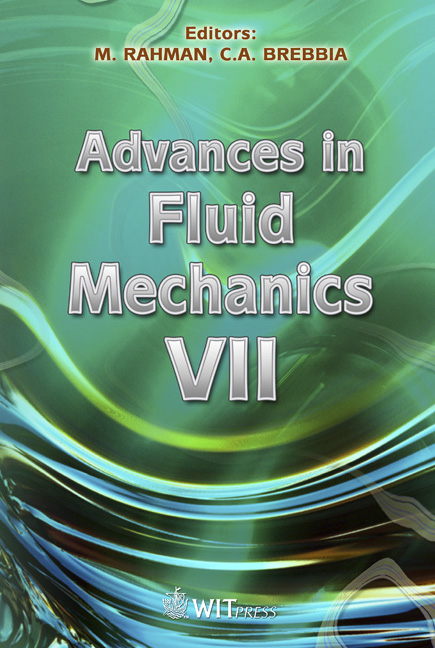Macroscopic Conservation Equation Based Model For Surface Tension Driven Flow
Price
Free (open access)
Transaction
Volume
59
Pages
9
Page Range
133 - 141
Published
2008
Size
342 kb
Paper DOI
10.2495/AFM080131
Copyright
WIT Press
Author(s)
T. M. Adams & A. R. White
Abstract
Due to the small scales encountered in MEMS and microfluidic devices, surface tension can play a significant role in the device physics. As such, many microscale devices have exploited surface tension forces to serve as passive valves and to move fluids. Surprisingly, few models for surface tension driven flow seem to have been developed. In this study a theoretical mathematical model for surface tension driven flow through a capillary of an arbitrary cross section is derived. The model is based on macroscopic mass and momentum balances, allowing for different physical insights to be drawn compared to approaches starting with the Navier-Stokes equations. Expressions for flow length and velocity are derived for both frictionless flow and for flow with wall friction. For frictionless flow the result of surface tension force is to increase the momentum of the fluid by constantly drawing mass into the capillary at a constant characteristic velocity. In the case of flow with wall friction, a characteristic time scale can be calculated. For times on the order of the characteristic time scale, the flow velocity exponentially decays from the characteristic velocity, whereas for larger times the velocity shows an inverse power law dependence. The model well predicts flow behaviour for previously published experiments in which the characteristic time is small. For systems in which the characteristic time is larger, the model may show improved performance over previous models. Keywords: capillary, microchannel, microfluidics, surface tension. 1 Introduction With the rapid development of microfluidic devices over the past decade, the favourable scaling of surface tension with small dimensions has been exploited
Keywords
capillary, microchannel, microfluidics, surface tension.





